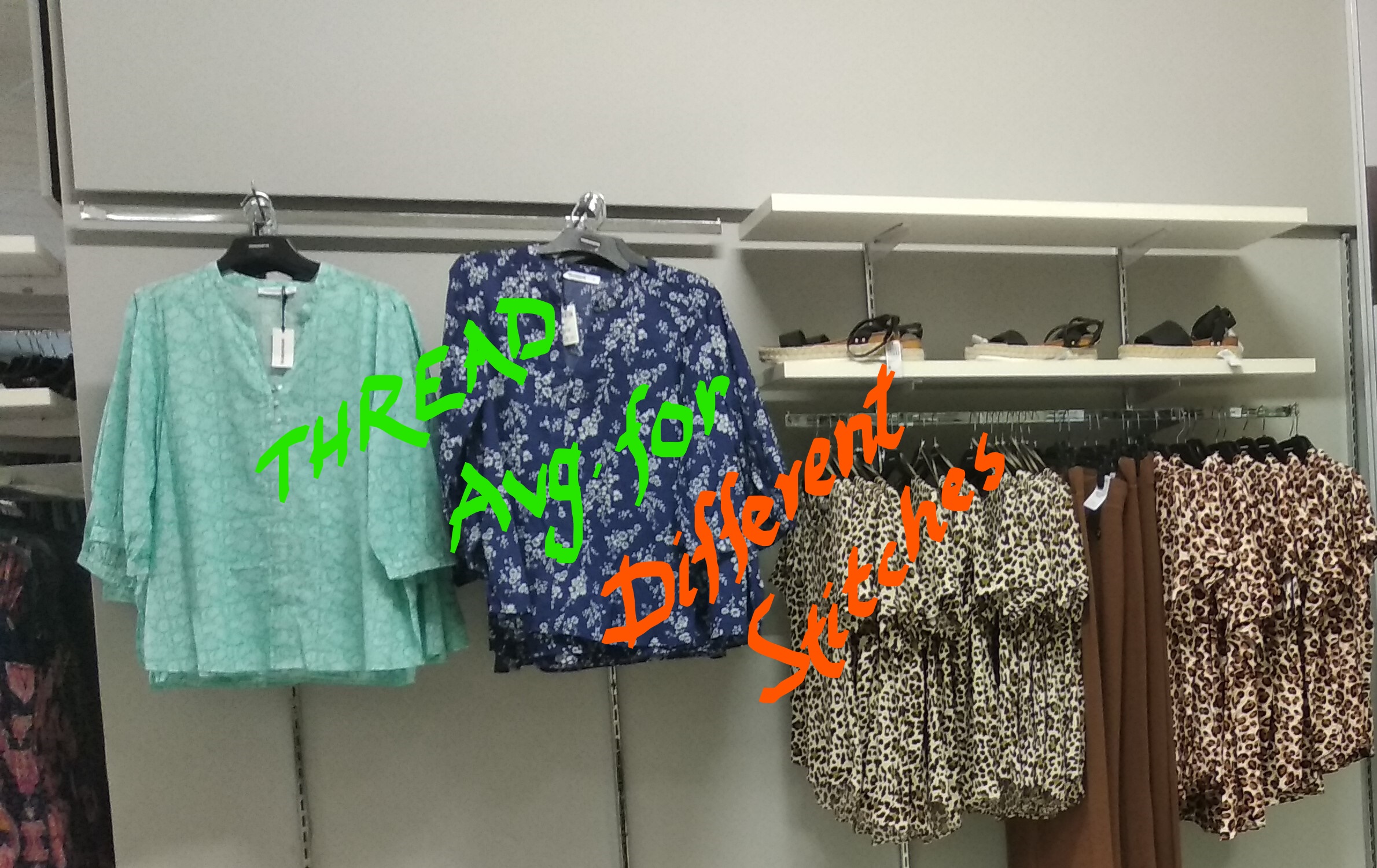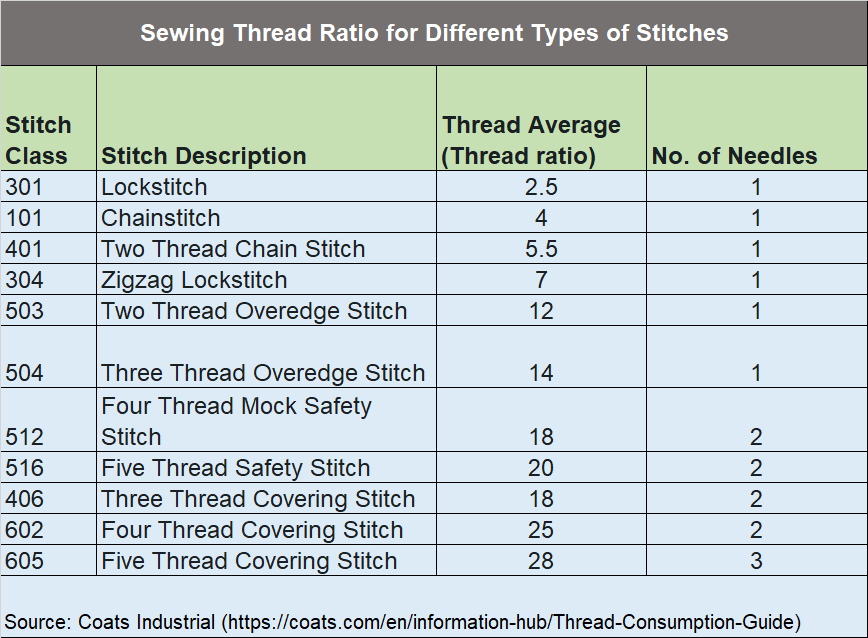Question: I want to know the average garment thread which is used for different stitching types.

Answer to this question
You know that different types of stitching (stiches) are used in making readymade garments. There are different types of sewing machines as well to make different types of seam and stitch classes. Following are few common stitch classes.
- Lock stich (single needle)
- Overlock (overedge stitch)
- Flat lock (cover stitch)
- Button holing
Different stitches consume different length of thread for sewing a unit length of seam. Once you have the idea (knowledge) how much sewing thread is required to make one inches of seam for a particular stitch type, you can then calculate average thread consumption for your garments.
Another note, the same sewing machine types can be used in forming different stitch classes.
It is a good idea to know the thread average used by industry for different stitch classes and use that average for thread consumption calculation. Now most of the industrial engineers and merchandisers in the garment industry use Excel template for calculating thread average for styles.
If you want to calculate average garment thread consumption manually, you can also do that. I would suggest preparing a chart of thread factors and sticking it on a pin board near your desk.
Or use the thread average ratio published by well-known thread manufacturing companies like Coats. Coats thread consumption ratio is mostly used by factories.

You can download this chart by clicking below link (PDF file) and take a printout for your reference. This one is made from Coats Thread consumption Guide.
To know the method of how thread average is calculated read the following article.
